First-thing-first: Guided and Unguided media are indeed part of communication media, specifically in the context of networking and telecommunications. These terms refer to the physical mediums through which data is transmitted in a communication system.
Communication Media
Communication media means sending and receiving data. Media is the general term used to describe the data path that forms the physical channel between the sender and the receiver. Media can be twisted-pair wire, such as that used for telephone installations It can be coaxial cable of various sizes and electrical characteristics. It can be also fiber-optic cables and wireless, supporting either light waves or radio waves.
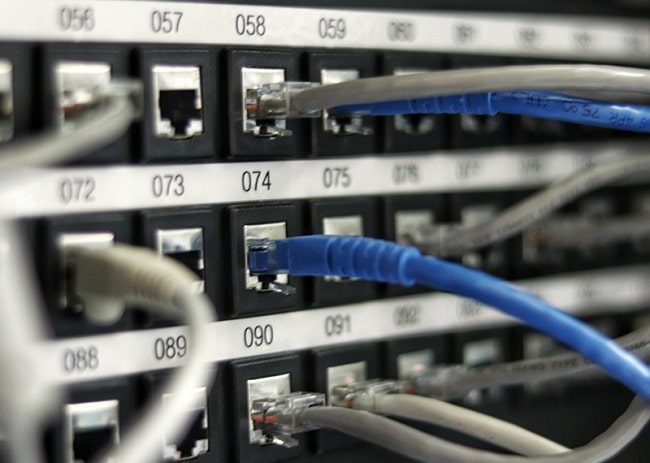
Note: Wire or fiber-optic media are referred to as bounded media, and wireless media are sometime referred to as unbounded media.
Media differ in the capability to support high data rates and long, distance transmission. the reasons for this are:
Noise Absorption:
Noise refers to any unwanted signals that can interfere with the transmission of the desired information. Noise absorption is the ability of a communication medium to absorb or reduce the impact of external interference or disturbances, such as electromagnetic interference (EMI) or radio-frequency interference (RFI).
Radiation:
Radiation in the context of communication media typically refers to the emission of electromagnetic waves from a source. In some cases, radiation can be undesirable, leading to signal leakage or unintentional signal transmission. Shielding and proper design are important to minimize radiation in communication systems.
Attenuation:
Attenuation is the decline of the magnitude of signal with distance due to the absorption of energy by the media. Radiation and the physical characteristics of the media contribute to attenuation or the reduction in signal as the signal travels down the wire or through free space.
Bandwidth:
Bandwidth is similar to the concept of frequency response in a stereo amplifier, the greater the frequency response the higher the bandwidth. According to a fundamental principle of information theory, a higher data transfer rate.
There are several types of physical channels (communication media) through which data can be transmitted of energy can be either guided of unguided. Some of the most common data transmission media are briefly described in the following sections:
Guided Media
Guided media refers to the method of transmission of data over which signal can travel in a network. Examples of guided media include the following :
Twisted-pair Wire:
A twisted-pair wire consists of two insulated copper wires typically 1mm thick. The wires are twisted together in a helical shape. The purpose of twisting the wires is to reduce electrical interference from similar pairs that are close by. In local telephone communication and for digital data transmission over short distances up to 1km. When many twisted pairs run in parallel for a substantial distance such as all the wires coming from a multistory apartment building to the telephone exchange they are bundled together and placed in a protective sheath.
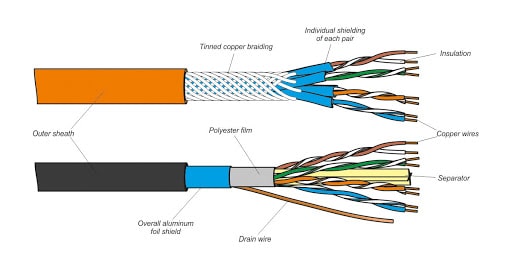
Coaxial wire:
Coaxial cable consists of a stiff copper wire as the core surrounded by an insulating material. The insulator is encased within a cylindrical conductor, often as a closely woven braided mesh. The outer conductor covered in a protective plastic sheath. Two kinds of coaxial cable are widely used. One kind 50-ohm cable, is commonly used for digital transmission. The other kind - 75-ohm cables, is commonly used for analog transmission in cable TV transmission.
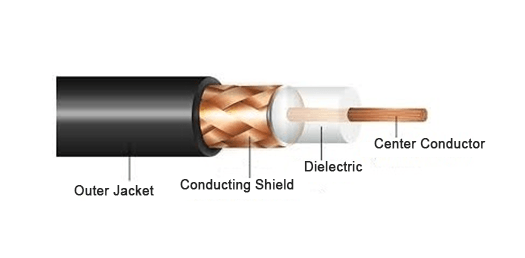
Optic Fiber wire:
Optic fiber is the newest form of bounded media. This media is superior in data handling and security characteristics. The fiber-optic cable transmits light signals rather than electrical signals. It is by far more efficient than other network transmission media. Each fiber has an inner core of glass or plastic that conducts light. There are two types of light sources for which fiber cables are available. These sources are :
- Light Emitting Diodes (LEDs).
- Stimulated Emission Radiation (Lasers).
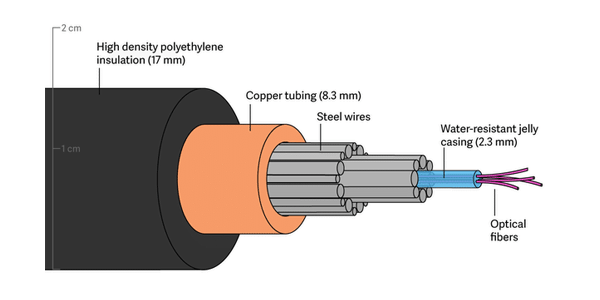
Unguided Media
Media in which the signals are not guided through a solid medium are known as unguided media. Air is the media through which electromagnetic energy can flow easily. Therefore there are several methods which are in use to send electromagnetic energy through air.
• Learn more about unguided media on Wireless Communication or Transmission page.
The choice of communication media depends on factors such as the distance of communication, data transfer rates required, cost, and the specific application. Wired media tends to be more reliable but may require physical installation, while wireless media offers greater flexibility but can be susceptible to interference. Many modern communication systems use a combination of both wired and wireless media to leverage the strengths of each.
Guided vs Unguided
Here's a table summarizing the differences between guided and unguided media: This table provides a concise overview of the key differences between guided and unguided media in communication networks.
| Guided Media | Unguided Media |
|---|---|
| Signals are guided along a physical path. | Signals propagate through free space. |
| Twisted-pair copper wires, coaxial cables, fiber-optic cables. | Radio waves, microwaves, infrared signals. |
| Attenuation (signal loss) is generally lower compared to unguided media. | Attenuation can be significant, especially over longer distances. |
| Less susceptible to electromagnetic interference. | More susceptible to electromagnetic interference. |
| Generally higher bandwidth capabilities. | Bandwidth limitations may exist, varying based on the frequency spectrum used. |
| Typically suitable for shorter to medium distances. | Can cover longer distances depending on the frequency used and environmental conditions. |
| Not as mobile due to the physical connection requirement. | Offers greater mobility since there are no physical connections. |
| Installation may be more complex and costly due to physical cabling requirements. | Generally easier to install, especially in situations where laying cables is impractical. |
| Generally more secure due to the difficulty of intercepting signals without physical access. | May be more vulnerable to interception since signals propagate through the air. |
| Ethernet networks, cable TV systems, telephone lines. | Wi-Fi networks, cellular networks, satellite communications. |
Conclusion:
Both guided and unguided media have their advantages and limitations. Guided media typically offer higher data transmission speeds, greater security, and reliability over shorter distances. In contrast, unguided media provide greater mobility and flexibility, allowing for wireless communication over longer distances and in environments where laying cables is impractical or impossible.
Category: Networking
on: 05 Mar 2020
on: 10 Apr 2024
Featured posts
You may like these posts.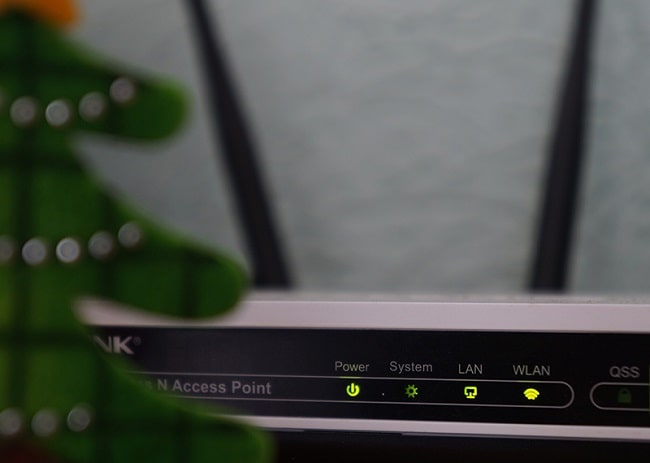
Different types of Wireless Communication & Transmission:
In the present days, wireless communication system has become an essential part of various types of wireless, many devices used wireless communication.
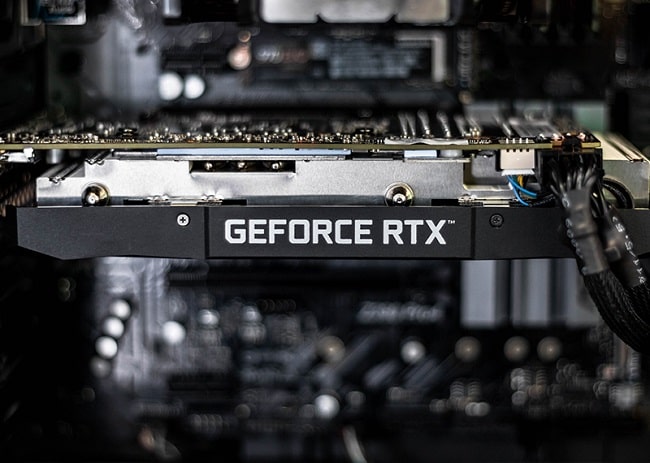
GPU - World First GPU Details & Where Company's use GPUs:
GPU (Graphics Processing Unit) is an electronic circuit used to speed up the creation of both 2D and 3D images. A GPU can be present on a video card.
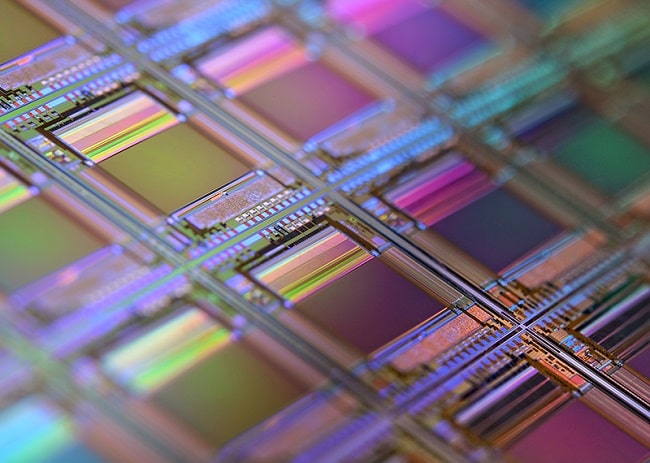
Cache Memory - Types & Levels of Cache Memory:
A CPU cache is a cache memory used by the CPU of a computer to reduce the average time to access main memory. The Cache is a smaller & faster memory.
What's Next?
We've now entered the finance section on this platform, where you can enhance your financial literacy.
